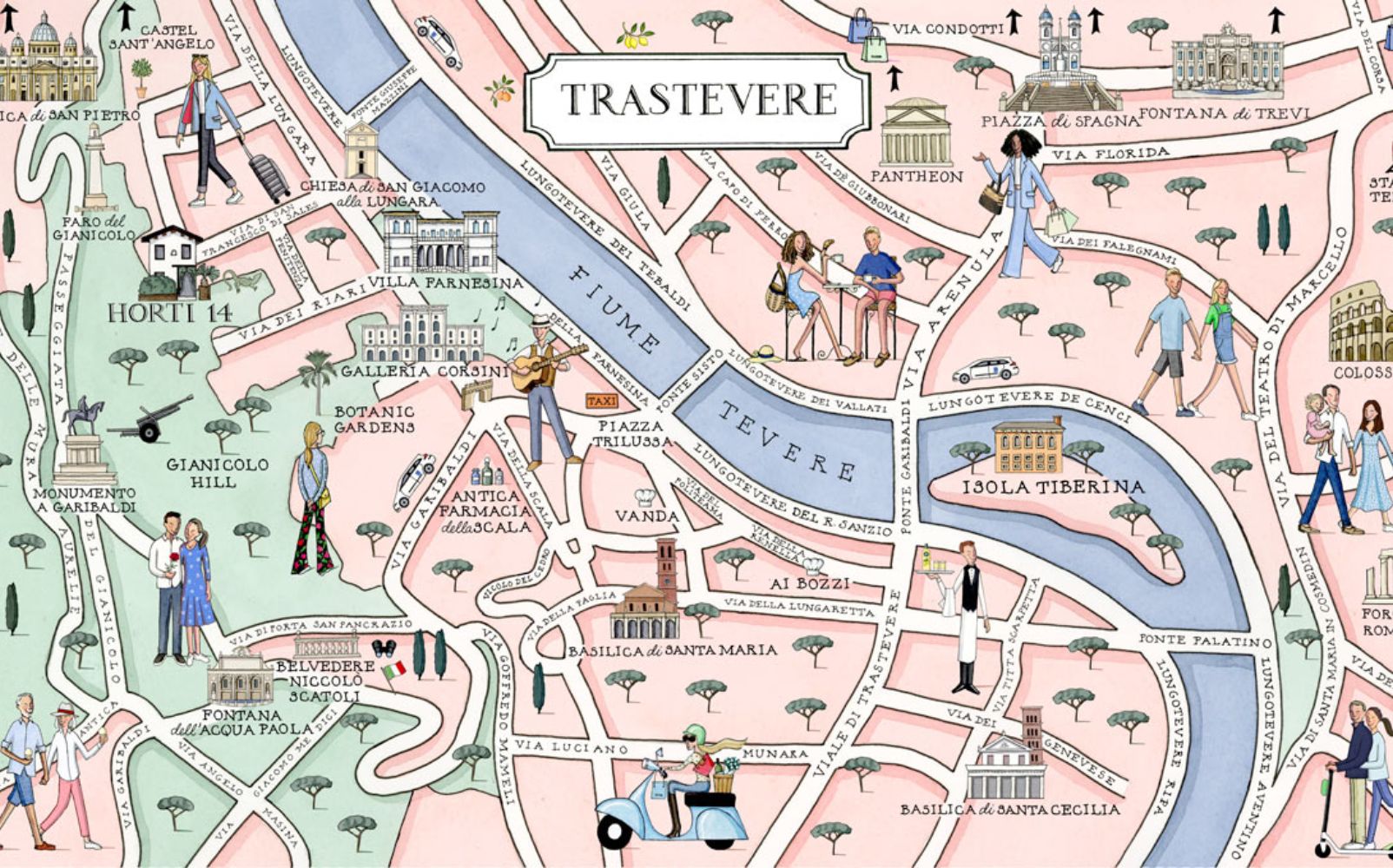
Want to experience Rome beyond the tourist trail – the authentic, lively, and soulful side? Welcome to Trastevere Rome!
Why You Need to Go to Trastevere
Trastevere isn’t just a neighborhood; it’s a universe of emotions and history. Here, Rome smells like freshly brewed coffee in the morning and fills with music, laughter, and chatter in the evenings. This district on the right bank of the Tiber seems frozen in time, with its narrow medieval streets, weathered facades, laundry strung between balconies, and countless street shrines. Walking here, you’ll feel like you’ve stepped into an Italian film, surrounded by genuine Roman life — it’s no wonder Trastevere is one of the most cherished places to visit in Rome.
A Quick History: How It All Began
The name “Trastevere” comes from the Latin trans Tiberim – “beyond the Tiber.” In ancient times, this area was inhabited by the Etruscans and later by settlers from the East and Africa, including Syrians and Jews, making it a melting pot of cultures. During the Middle Ages, it became a haven for artisans, fishermen, and sailors. By the 19th and 20th centuries, it attracted artists, poets, and bohemians seeking inspiration in its vibrant streets. It’s the simple people, their traditions, and their character that have shaped Trastevere into the beloved district it is today.
Top Must-See Spots in Trastevere
1. Basilica of Santa Maria in Trastevere

One of Rome’s oldest churches, dating back to the 3rd century, with a stunning 12th-century golden mosaic facade and an interior rich in medieval mosaics. If you’re making a list of what to see in Trastevere, this basilica is an absolute must. The lively Piazza Santa Maria is the social heart of the neighborhood, buzzing with street performers, artists, and locals enjoying aperitivos.
2. Villa Farnesina
A Renaissance gem built in the early 1500s for banker Agostino Chigi. This luxurious villa is adorned with magnificent frescoes by Raphael and his pupils, including the famous Triumph of Galatea. Architect Baldassare Peruzzi designed the villa, which remains one of Trastevere’s hidden artistic treasures.

3. Basilica of Santa Cecilia in Trastevere
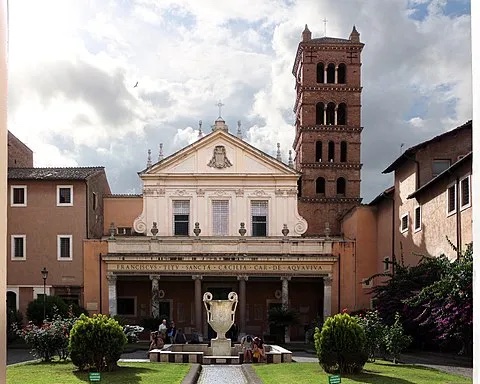
Dedicated to Saint Cecilia, the patroness of music, this church features a modest exterior but houses remarkable 9th-century mosaics, a marble statue of Saint Cecilia by Stefano Maderno, and 13th-century frescoes by Pietro Cavallini. Beneath the church lies an underground crypt with ancient Roman ruins, accessible only on special tours.
4. San Pietro in Montorio and Bramante’s Tempietto
Located on Janiculum Hill just above Trastevere, these are two connected but distinct landmarks.
San Pietro in Montorio is a late 15th-century Renaissance church built on the traditional site of Saint Peter’s crucifixion. The church is known for its architecture, artworks, and panoramic views of Rome.
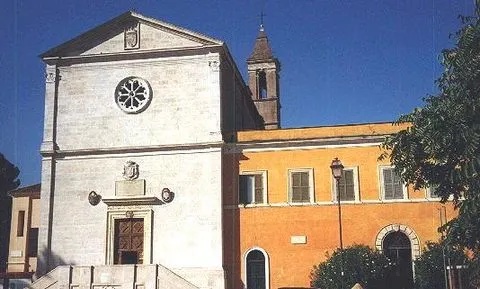
Bramante’s Tempietto is a small circular temple in the church courtyard, designed by Donato Bramante in the early 16th century. It marks the spot of Saint Peter’s martyrdom and is considered a masterpiece of Renaissance architecture.
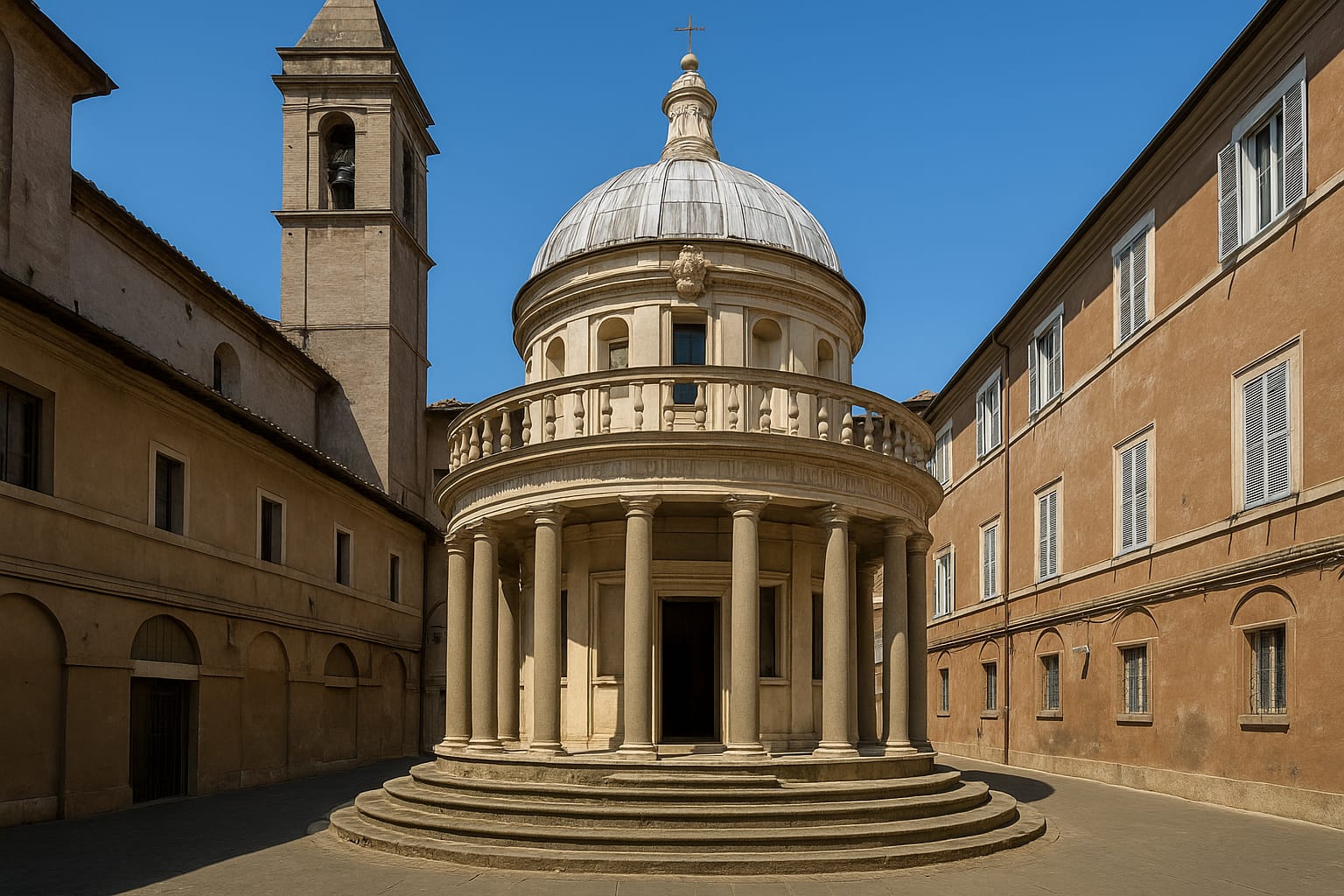
Together, they form a unique complex united by shared history, spiritual significance, and stunning views of the city — a must for anyone seeking things to do in Trastevere beyond the usual tourist path.
5. Tiber Island (Isola Tiberina)
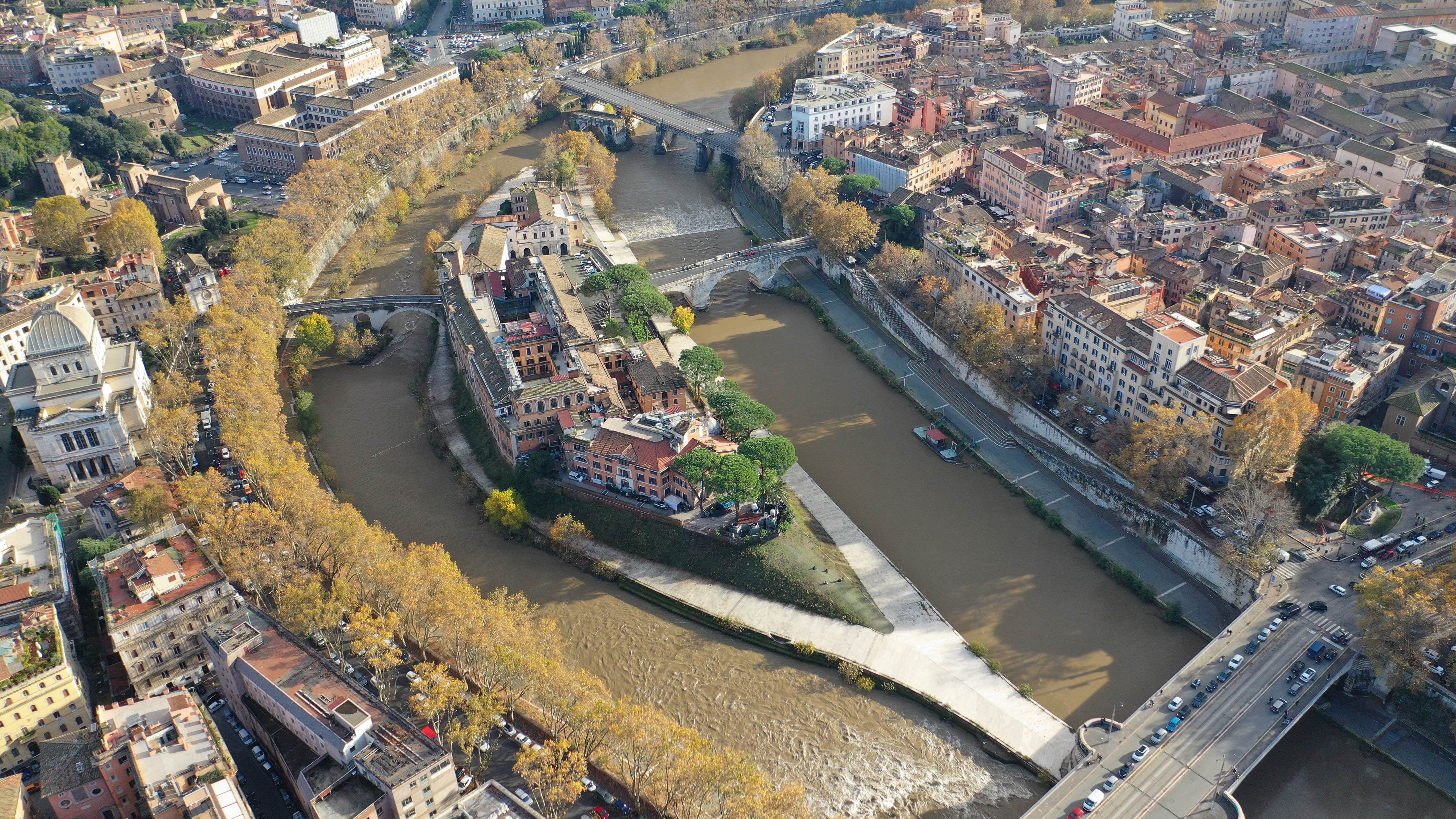
Connected to Trastevere by the Ponte Cestio bridge, this tiny island in the Tiber River resembles a medieval hill town. Historically the site of a temple to Aesculapius, the god of medicine, it still hosts a hospital and is known as a place of healing. During summer, the island hosts the Isola del Cinema film festival and features seasonal bars and eateries along the riverbanks.
6. Porta Portese Market (Sundays Only)
Rome’s largest open-air flea market is a treasure trove for vintage lovers, antique hunters, and bargain seekers. From vinyl records and old books to jewelry and local food, Porta Portese offers an authentic local shopping experience every Sunday morning.
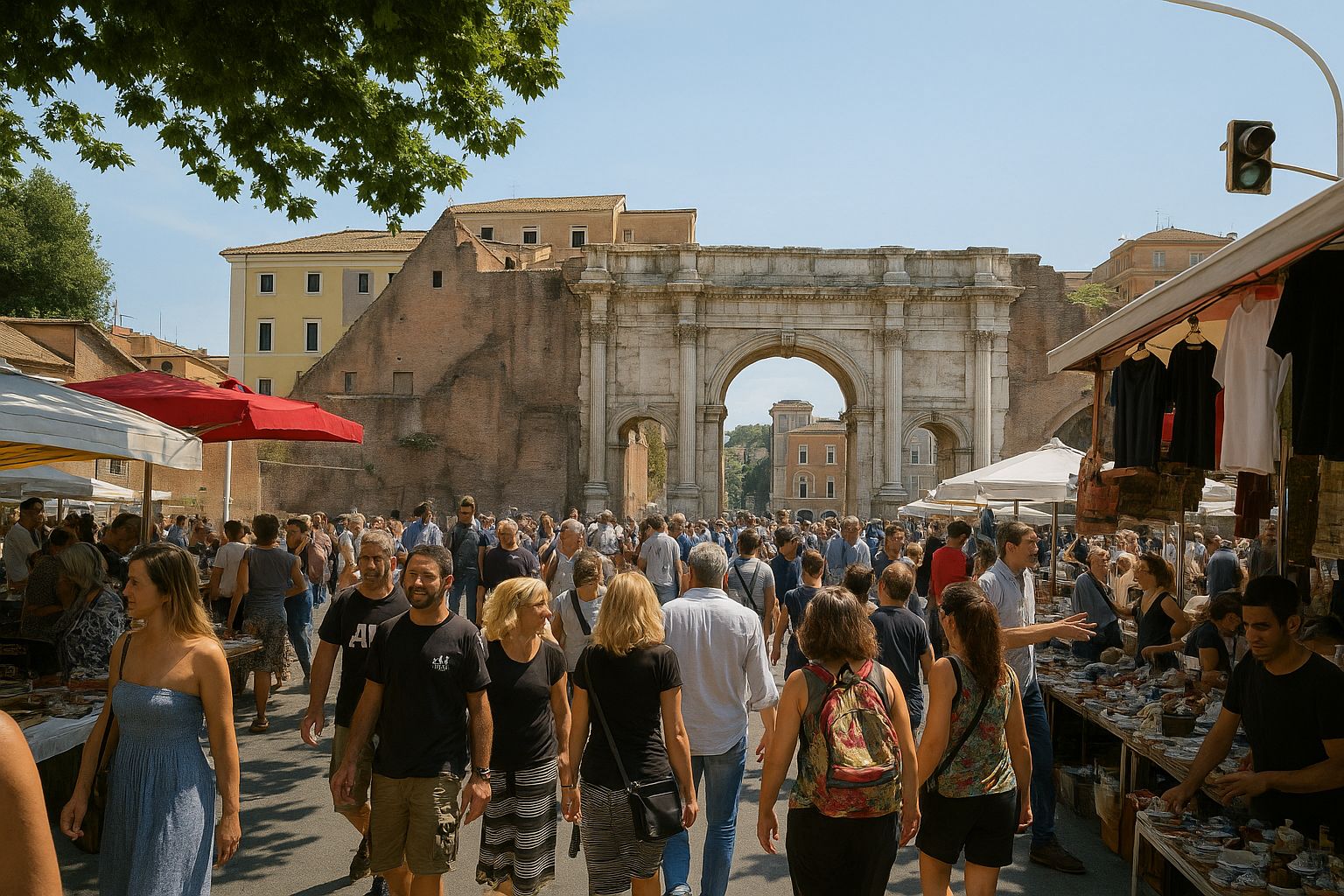
A Taste of Rome: What to Try in Trastevere
- Supplì – deep-fried rice balls stuffed with mozzarella and tomato sauce.
- Cacio e pepe – simple yet iconic pasta with pecorino cheese and black pepper.
- Saltimbocca alla romana – tender veal topped with prosciutto and sage.
- Fiori di zucca fritti – fried zucchini flowers, a local delicacy.
- Pizza Romana – thin, crispy, and topped with fresh, quality ingredients.
Where to Eat
- Trattoria da Enzo al 29 – cozy and authentic, expect a line but it’s worth the wait.
- Osteria Zi’ Umberto – traditional Roman dishes in a warm, unpretentious setting.
- Pimm’s Good – great cocktails paired with live street jazz.
Atmosphere & Walks: Feel the Magic of Trastevere
By day, lose yourself in the labyrinth of cobblestone streets, peek into artisan workshops, vintage boutiques, and quaint cafes. Trastevere is often featured in Rome tours, thanks to its authentic character and vibrant energy.
In the evening, the neighborhood transforms with live music, laughter, glowing streetlights, and the clinking of glasses over aperitivos.
Tip: Don’t miss climbing Janiculum Hill at sunset for unforgettable views of Rome’s skyline.
Useful Tips
- Wear comfortable shoes – the cobblestones can be tricky!
- Leave strict itineraries behind – the best discoveries happen by chance.
- Stop and listen to a street musician – that’s the true sound of Rome.
Explore Deeper: Hidden Gems and Unique Experiences
For those wanting to go beyond the usual sights, consider a guided Trastevere Rome walking tour exploring Trastevere’s underground crypts, secret ruins beneath Santa Cecilia, and the rich layers of history connecting Trastevere with the nearby Jewish Ghetto and Tiber Island. These tours reveal fascinating urban legends and stories not found in typical guidebooks.
- *In the Clever map section, you can find information about other wonderful spots in this area.
Have You Been to Trastevere?
Share your impressions with our chat bot! He will post them here for you. Which places or dishes did you like the most? If you have any questions – ask, we’ll be happy to help with advice!
Trastevere isn’t just a neighborhood, it’s a feeling. Come, wander, eat, listen, and fall in love. Here, Rome is at its most authentic!
